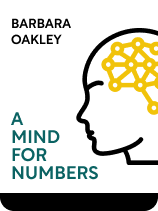

This article is an excerpt from the Shortform book guide to "A Mind for Numbers" by Barbara Oakley. Shortform has the world's best summaries and analyses of books you should be reading.
Like this article? Sign up for a free trial here .
Do you know how to take tests well? What strategies work the best?
A Mind for Numbers author Barbara Oakley recommends the “hard-start-jump-to-easy” test-taking strategy. It has five steps, and it leverages the way your brain works. We’ll discuss this strategy and compare it with a few others.
Keep reading to learn how to take tests.
How to Take Tests
In school, you periodically have to demonstrate what you have learned by taking an exam. To do well on an exam, you need to know the material.
Aside from studying effectively, we’ve extracted three general rules for how to take tests from A Mind for Numbers: get enough sleep, take a strategic approach to solving the test questions, and manage your test anxiety.
The “Hard-Start-Jump-to-Easy” Strategy
Oakley recommends using the “hard-start-jump-to-easy” test-taking strategy:
- First, skim the test and identify which questions look the hardest and which ones look easy.
- Work the hardest problems first.
- If you get stuck on a problem, Oakley says to stop working on it and switch to an easy problem.
- When you finish the easy problem, come back to the problem you got stuck on and try to make some more progress.
- Repeat as needed until you finish all the problems.
According to Oakley, other parts of your brain can continue to process the difficult problem in diffuse mode while you’re working the easy one. This can help you overcome the Einstellung effect and find the solution to the problem you got stuck on, while also saving time by getting the easy problems out of the way while the diffuse mode is working on the hard ones.
Given Oakley’s rationale for the hard-start-jump-to-easy method, we might infer that its effectiveness would depend at least partially on whether the easiest problems on the exam are easy enough that your brain can relax and shift into diffuse mode while you work on them.
| Comparison of Test-Taking Strategies There are differences of opinion as to the best overall test-taking strategy. Oakley appears to have originated or at least formalized the hard-start-jump-to-easy approach. Like Oakley, memory psychologist William Wadsworth advises getting the hardest thinking done first, while you’re still fresh, to make the best use of your mental resources. However, he suggests a somewhat different method of doing so: Outline the solution to all of the difficult problems first, then go back and finish implementing each solution. Meanwhile, authors Judi Kesselman-Turkel and Franklynn Peterson suggest solving the easy problems first. They argue that starting with the easy questions helps to soothe anxiety, and stimulates your brain, much like doing warm-up stretches before intensive exercise prepares your body for the exertion. Thus, the question of whether it’s better to start with the hardest problems or the easiest ones hinges partly on whether a “warm-up” helps your brain or just drains some of your mental energy. To date, neurological studies on this subject have been inconclusive. |

———End of Preview———
Like what you just read? Read the rest of the world's best book summary and analysis of Barbara Oakley's "A Mind for Numbers" at Shortform .
Here's what you'll find in our full A Mind for Numbers summary :
- How to make math and science intuitive
- Strategies for remembering complex concepts more easily
- How to build good study habits and avoid procrastination






